SEO, SEM and CRO - What is Digital Marketing Strategy?
How do SEO, SEM and CRO strategies work? What are their roles in digital marketing and how do they grow traffic together?
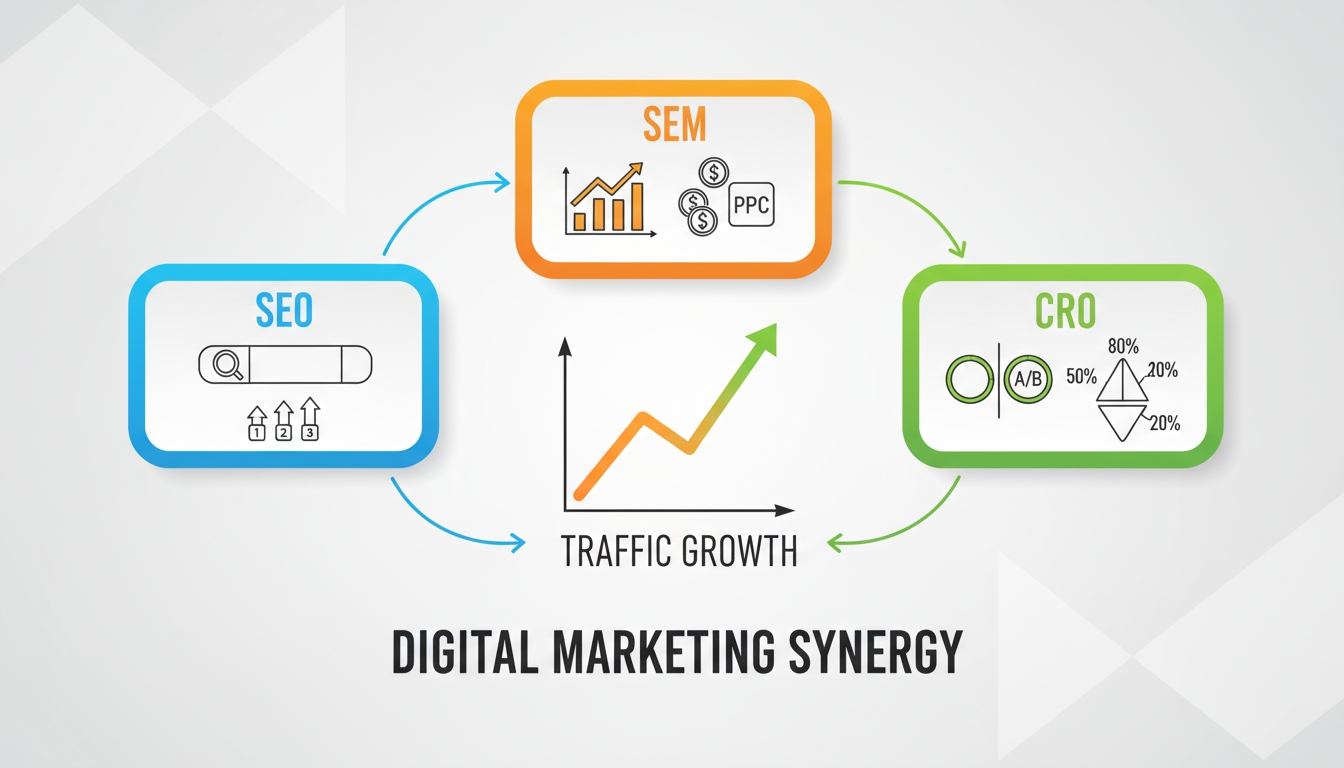

Onur Kendir
Senior Engineering Leader in Fintech, Digital Marketing, AI
Success in digital marketing is measured not only by gaining visibility, but by converting this visibility into sustainable growth. SEO, SEM and CRO form the three fundamental pillars of this growth. However, most businesses handle these concepts in isolation. Yet when these three come together, they create a multiplier effect in terms of conversion, sustainability and brand reputation.
Strategic Perspective
SEO - The foundation of permanence with search engine optimization
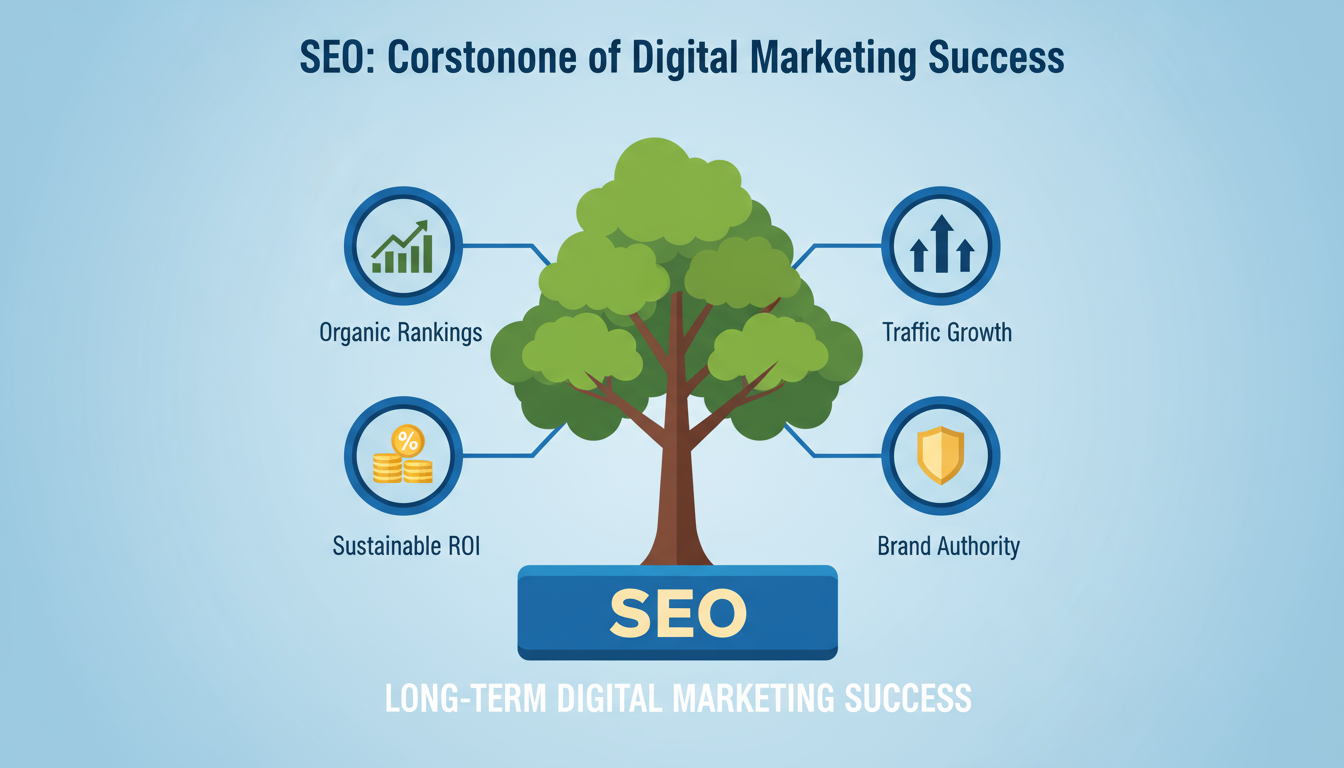
SEO (Search Engine Optimization) aims to move websites to the top ranks in search engines organically. It is the foundation of creating sustainable traffic without advertising budget and is one of the channels with the strongest return on investment in the long term.
Concrete example: If an e-commerce site invests in technical SEO, content optimization and backlink strategy for two years, it can reduce its advertising budget by 40%. Because organic traffic starts to feed itself.
Measurement method: Organic traffic increase, keyword ranking and conversion rate should be examined together.
Advantages:
Provides permanent traffic and brand trust in the long term. When content compatible with user intent is produced, conversion rates naturally increase.
Disadvantages:
Results take time. SEO errors or unplanned changes can quickly pull rankings back. Therefore, every site update should be tested according to the SEO plan.
Application Focused
SEM - Quick visibility with search engine marketing
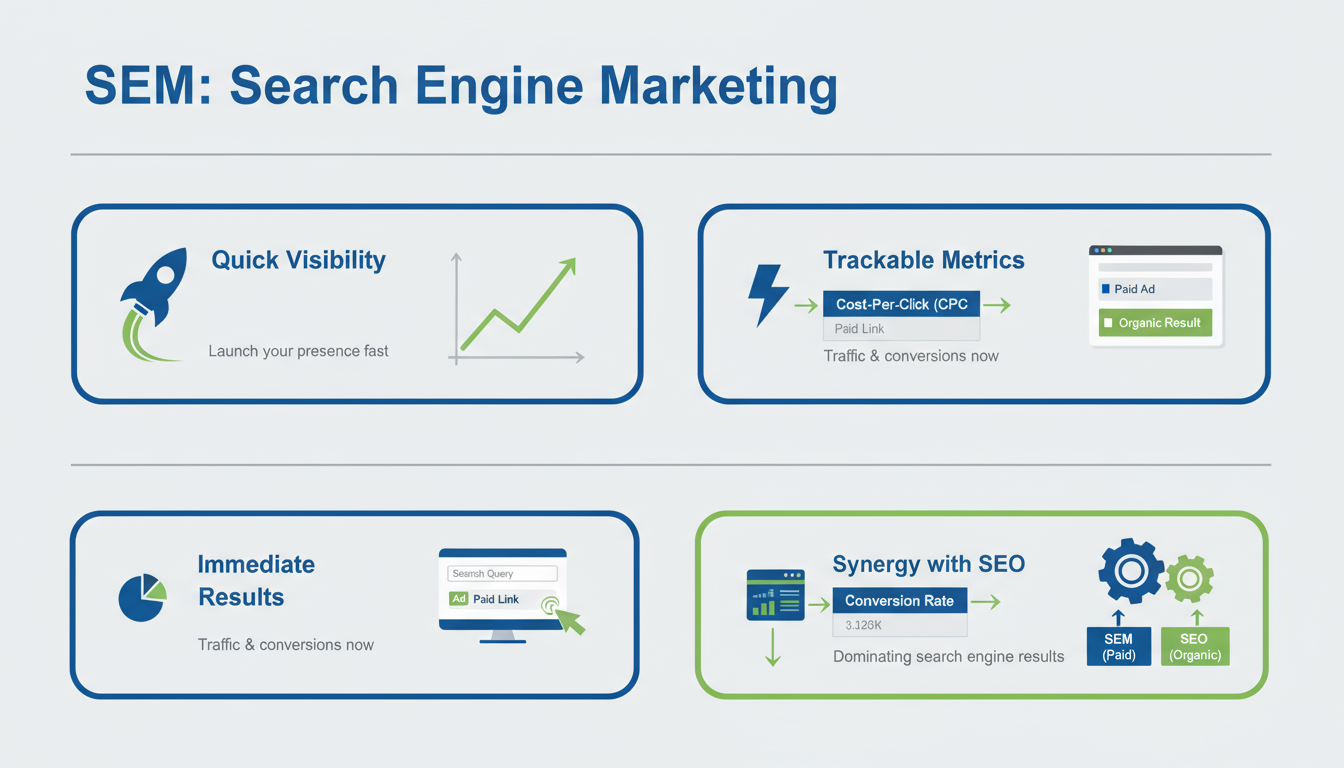
SEM (Search Engine Marketing) provides quick visibility through advertising in search results. Its difference from SEO is that results can be obtained immediately. However, when the budget stops, visibility also stops.
Concrete example: In a new product launch, quick access to the target audience can be provided with Google Ads campaigns. During the same period, SEO content is prepared so that brand visibility is maintained even if the campaign ends.
Measurement method: Cost per click (CPC), ad conversion rate and customer acquisition cost (CAC) metrics should be tracked.
Advantages:
Gives quick results, ideal for strategic tests. Target audience segmentation can be done and ad texts can be shaped according to user intent.
Disadvantages:
Not sustainable. When payments are not made for clicks, traffic is lost. Therefore, SEM should be supported with permanent SEO strategies.
Future Vision
CRO - Converting traffic to revenue with conversion optimization
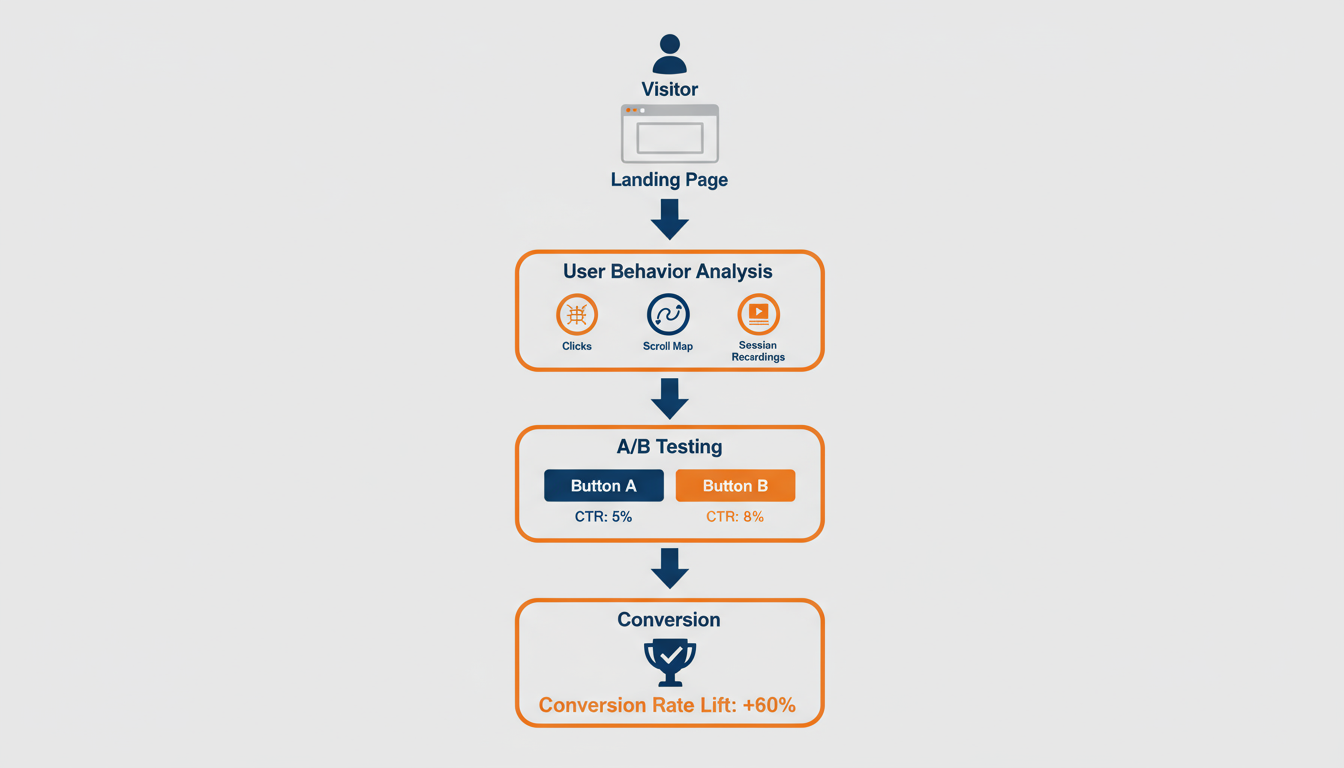
CRO (Conversion Rate Optimization) aims to convert more of the visitors coming to the website into customers. SEO and SEM bring traffic. CRO converts traffic into revenue.
Concrete example: A business can increase its conversion rate by 25% by improving page loading speed by 2 seconds and testing CTA (Call-to-Action) button color.
Measurement method: A/B tests, user session analysis and funnel (conversion funnel) tracking metrics.
Advantages:
Can be applied without coding knowledge. Even small changes can dramatically increase conversion performance.
Disadvantages:
Conversion optimization is not only technical but also a psychological skill. User behavior, content language and trust elements need to be analyzed together.
Using the three strategies together
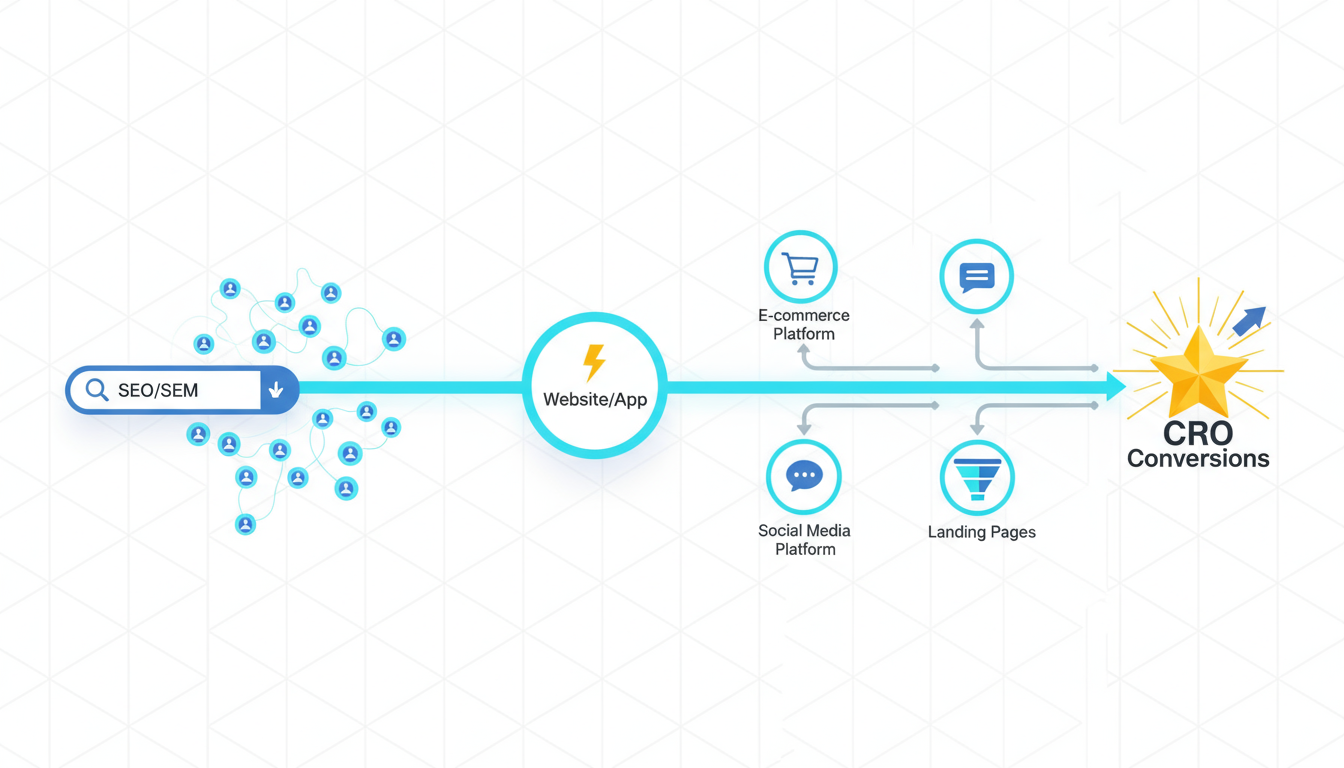
SEO, SEM and CRO are complementary systems. SEO provides organic visibility in the long term, SEM provides speed in the short term, and CRO converts all traffic into revenue.
Benefits of balanced use:
- Advertising costs decrease over time
- Organic traffic becomes permanent
- Conversion rate increases
- Brand trust increases
- Data-driven growth is achieved
Application example:
A business that only invests in advertising can spend $400,000 in two years. A business that uses SEO, SEM and CRO holistically in the same period spends $250,000 and makes the same traffic permanent. Moreover, despite reducing the advertising budget at the end of the second year, visibility continues.
Application-focused strategies
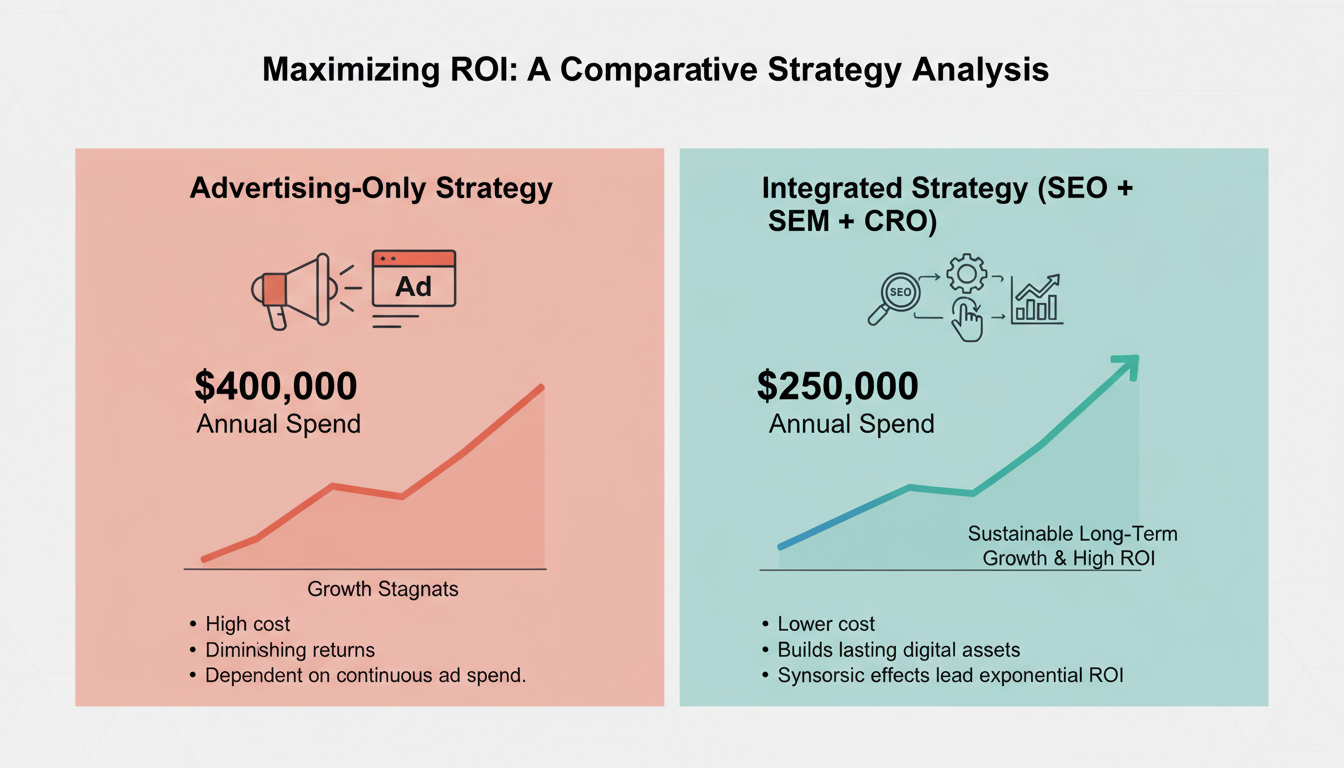
1. Automate SEO Strategy
- Create weekly performance reports using Google Search Console, Ahrefs or SEMrush.
- Update content plan with this data.
2. Direct SEM Campaigns with Data
- Focus on user intent in ad texts.
- Optimize keyword analysis weekly.
3. Routine CRO Tests
- Do A/B tests every 30 days.
- Simplify form fields, update CTA texts with user language.
4. Establish Data Integration
- Monitor all SEO–SEM–CRO data in a single panel with Google Analytics, Hotjar and Tag Manager integration.
5. Structure Conversion Tracking
- Measure sales, lead or registration form conversions separately.
- Clearly determine which channel generates revenue.
Career perspective
These strategies guide not only businesses but also professionals who want to grow their careers in digital marketing.
SEO specialist: Can make content strategy conversion-focused by reading CRO data.
SEM specialist: Can increase ad conversion rate with A/B tests.
Digital marketing specialist: Can specialize in ROI reporting with SEO, SEM and CRO integration.
Business owner: Can gain permanent organic traffic with SEO investment and reduce advertising dependency.
Career paths:
- Growth Hacker: Specializes in data analysis, test design and rapid scaling strategies.
- Digital Marketing Manager: Ensures strategic integrity, directs team management and optimization processes.
Long-term measurement and value analysis
1. Short term (1–3 months): Click, impression, site traffic increase
2. Medium term (3–6 months): Conversion rate, user interaction, cart abandonment rate
3. Long term (6–12 months): Revenue per customer (ARPU), advertising dependency rate, organic growth chart
This three-level measurement approach enables the business to track not only visitors but value-generating users.
Vision
Digital success is possible not only with clicks, but with growth compatible with user intent.
SEO provides visibility, SEM provides speed, CRO provides conversion.
Businesses that manage these three strategies together don't just make sales; they become learning, adapting and long-lasting brands.
In the next section, we will discuss the real applications of these strategies in the field, measurement methods and budget optimization examples.
Frequently Asked Questions
What is the difference between SEO, SEM and CRO?
SEO (Search Engine Optimization) focuses on organic search visibility and long-term sustainable traffic. SEM (Search Engine Marketing) provides immediate visibility through paid advertising. CRO (Conversion Rate Optimization) converts website visitors into customers. While SEO and SEM bring traffic, CRO ensures that traffic converts into revenue.
How long does it take to see SEO results?
SEO results typically take 3-6 months to become visible, with significant improvements often taking 6-12 months. However, technical SEO improvements can show results in 1-2 months. The key is consistency and following search engine guidelines while creating valuable content for users.
What is the relationship between SEM and SEO?
SEM and SEO are complementary strategies. SEM provides immediate visibility and quick results through paid ads, while SEO builds long-term organic visibility. SEM data can inform SEO keyword strategies, and SEO success can reduce SEM dependency over time. The best approach is to use both together for maximum impact.
How can CRO improve conversion rates?
CRO improves conversion rates through A/B testing, user experience optimization, page speed improvements, and psychological elements like trust signals and clear call-to-action buttons. Even small changes like button color, form field reduction, or page loading speed can increase conversions by 20-30%.
What metrics should I track for digital marketing success?
Key metrics include organic traffic growth (SEO), cost per click and conversion rate (SEM), and conversion rate and revenue per visitor (CRO). Also track customer acquisition cost, return on ad spend, and organic vs. paid traffic ratios to understand the full impact of your digital marketing strategy.
How much budget should I allocate to SEO, SEM and CRO?
Budget allocation depends on your business goals and timeline. For immediate results, allocate 60% to SEM, 30% to SEO, and 10% to CRO. For long-term growth, shift to 40% SEO, 40% SEM, and 20% CRO. Start with SEM for quick wins, then invest more in SEO for sustainable growth.
Can I do SEO, SEM and CRO without technical knowledge?
Yes, you can start with basic implementations without deep technical knowledge. Use tools like Google Ads for SEM, Google Search Console for SEO monitoring, and A/B testing tools for CRO. However, for advanced optimization and better results, consider working with specialists or investing in training.
What are the common mistakes in digital marketing strategy?
Common mistakes include treating SEO, SEM and CRO as separate strategies instead of integrated ones, focusing only on traffic without considering conversion, ignoring mobile optimization, not tracking the right metrics, and expecting immediate results from SEO. The key is to plan holistically and be patient with organic growth.

FinTech Growth Strategies
Data-Driven Digital Marketing & AI Innovation